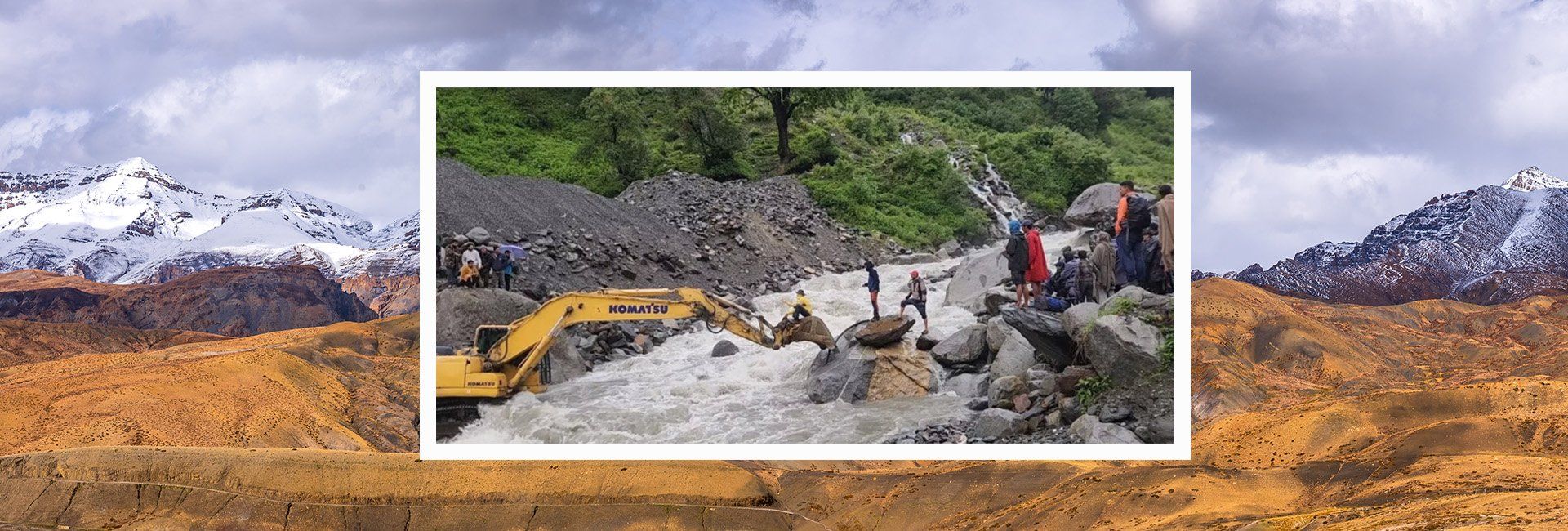As Mecca sweltered in temperatures of more than 51°C in June, more than 1.8 million pilgrims from around the world trudged for hours around the holy city to perform the Hajj Pilgrimage. In one day, as they walked more than 15 kms in the unbearable heat, some pilgrims collapsed and lost consciousness. Others recalled walking past dead bodies covered in white cloths on the street. More than 1300 are reported to have died.
Saudi authorities said many of the affected pilgrims came through unauthorised channels and did not have the special Hajj Visa that included facilities like air-conditioned buses and tents.
Hajj is a mandatory pilgrimage in Mecca, Saudi Arabia, that every financially and physically abled Muslim must perform once in his life, and its timing each year is dictated by the Muslim calendar so cannot be shifted to avoid extremes in temperature.
The Hajj deaths called global attention to the Saudi heatwave, which ClimaMeter analysis categorised as a “very uncommon event whose characteristics can mostly be ascribed to human-driven climate change”.
Across the globe, extreme weather events – heatwaves, fires, ocean warming and flooding – are challenging the tourism industry to become more sustainable and examine its role in the growing climate crisis.
'Every monsoon we do see heavy rainfall in Himachal Pradesh but you don't necessarily see it … how it was last year.'
Tourists are voting with their feet. In Greece, long the summer playground for Europeans, the country experienced its earliest heatwave on record this year. At least six tourists died after hiking in temperatures up to 40 degrees, including renowned British medical journalist Michael Mosley. Greece was forced to close one of its most popular sites, The Acropolis, for five hours from noon to 5pm to protect the tourists from the heat.
In response, tourists are increasingly choosing “coolcations”, over traditional summer holiday hotspots. Conde Nast Traveller noted after the scorching summers of 2022-23, travellers were increasingly opting for Nordic regions with more temperate climates. Luxury travel agency Virtuoso’s survey of its clientele found 82 per cent were considering regions with moderate weather this year.
*****
IN ONE such cooler location, the Himalayan mountains, the adventure travel industry is facing its own climate challenges with an increase in glacier melts, flash flooding and landslides.
Lakshmi Selvakumaran, of Indiahikes, a Himalayan trekking organisation, said the weather was producing “a little bit of uncertainty and unpredictability” for the industry.
“There's also a little bit of uncertainty and unpredictability with regards to the weather."
“It has always been there but I think increasingly you don't know when to anticipate snow or how much snow it is going to be and that is kind of becoming a challenge.”
She also highlighted flash flooding in the region last year. “Every monsoon we do see heavy rainfall in Himachal Pradesh but you don't necessarily see it … how it was last year.
“I don't know to how much we can attribute this to climate change, but it does seem that this plays a part,” she said.
The torrential rains in Himachal Pradesh caused 509 fatalities, with local communities and tourism businesses in the state severely impacted.
“I think the entire month, we had to call off treks,” Selvakumaran said. “There was huge damage to property. There was huge damage to all the trekking trails. People were not able to come back and do the trek. We had to divert the treks across the state.”
Almost 2000 trekkers had to be shifted out of Manali, a popular tourist destination known for trekking, river rafting, paragliding.
“Even this year we are worried whether this is something that will happen again,” Selvakumaran said.
*****
IN SOUTH-EAST Asia and tropical northern Australia, rising sea temperatures are threatening coral reefs. Australia’s Great Barrier Reef marine park, which attracted more than 2 million visitors in 2023, is increasingly vulnerable to warming ocean temperatures.
A study by a team of international researchers at University of Adelaide projects future marine heatwaves will severely threaten coral bleaching for longer periods and more frequently than before. Earlier this year, the Great Barrier Reef experienced its fifth mass bleaching event within the past eight years.
In Malaysia, Dr Vikneswaran Nair, the president and professor of sustainable tourism at DISTED College, Penang, is also concerned that rising ocean temperatures will damage his country’s renowned coral reefs around Perhentian and Redang Islands, making them less appealing to tourists.
Nair, responding to emailed questions from Newsworthy, spoke of the impact on tourism in different parts of Malaysia. He said tourists were avoiding regions where extreme weather events were frequent and disruptive to travel plans.
“Destinations with visibly damaged natural attractions such as bleached coral reefs or eroded beaches are less appealing to environmentally-conscious travellers seeking pristine and unspoiled environments,” he said.
*****
BOTH academics and tourism businesses are trying to map out a way forward for tourism in a rapidly changing world. Dr Susanne Becken, professor of sustainable tourism at Griffith University, in Queensland, believes there is a future for tourism in a world impacted by climate change.
“There's a future but we have to shift things, we have to change the timing," Becken said. Think about the Australian Open tennis, presently played in January in Melbourne, when it is extremely hot. "We may not have them in places that are not safe anymore,” she said.
In Australia, she notes there has been a shift in typical seasons of travel.
“In winter we noticed that the [ski] season starts a little bit later. In fact, it's getting a bit shorter, so people who traditionally wanted to ski in June they can't do that. So, it's all about the timing.”
In the Himalayas, it’s about better understanding extreme rain events and their consequences. For Indiahikes, the floods of 2023 were an eye-opener.
“If this is what likely is to happen more and more, are we ready for it? And how will this change, how as an organisation we will operate? I think that that is something we are still figuring out,” Selvakumaran said.
“I think we are also slowly opening trails that are very close to cities. We are realising that our demography of trekkers is also changing,” she said.
Both Nair and Becken have witnessed the growing awareness by the tourism industries in Malaysia and Australia.
Nair said the future of travel and tourism industry in Malaysia will depend on incorporating sustainability in planning and development. Travellers are more aware of their carbon footprint and looking for ways to balance it.
“[Travellers are] participating in carbon offset programs and choosing more sustainable modes of transportation,” he said. In response, the tourism industry is offering more sustainable options.
“Businesses are implementing renewable energy, reducing water consumption, investing in resilient infrastructure and diversifying attractions to less climate-sensitive areas,” Nair said.
He said there was a need to promote off-season tourism to relieve pressure in peak periods; to invest in climate resilient infrastructure; and to diversify tourism offering to include less climate-sensitive and more inland attractions.
For a company such as Indiahikes, sustainability is a core value and they believe individual actions count. Selvakumaran described their Green Trails Initiative, developed to reduce their impact on the environment as they trek.
“If you go on any popular trek, across the country, the reality is this, that there is a huge waste crisis,” Selvakumaran said. Beginning with waste management, the organisation provides every trekker with eco-bags to pick up waste they see on the trails. Indiahikes then collects and separates the waste and disposes it in an environmentally-friendly way.
“We believe that if people build a certain sensitivity towards [nature], they build a little appreciation towards it and respect towards it, they will go back and perhaps want to take up sustainability in their own lives,” Selvakumaran said. “We want to use our trek also as an opportunity to educate our trekkers, not just on sustainable trekking, but also on sustainable living.”
Indiahikes is reducing its carbon footprint through its actions, the challenge for the industry as a whole is how best it can follow suit. The Tourism Panel on Climate Change’s Stocktake Report 2023 found the industry is responsible for 8-10 per cent of global emissions and is falling behind its target (set out in the 2021 Glasgow Declaration on Climate Action in Tourism) to reduce emissions by 50 per cent by 2030.
“The evidence is that the well-intended changes made in the tourism sector are dwarfed by the sector's growth, which means that impacts are still increasing overall,” Becken said. “Given that climate change has already altered today's conditions (with plenty of evidence around us) the bottom line is that tourism is not doing enough.”






As a checkout chick, I'm used to rudeness. But I can't bear the threats and violence